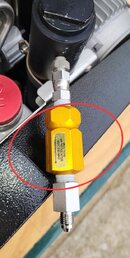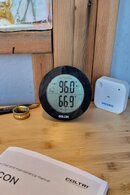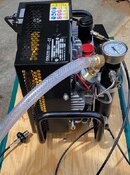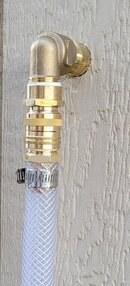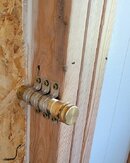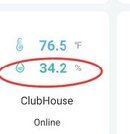It's like a garden hose...... 1 gallon in, 1 gallon out.
Others have harped on it, but I’m going to as well because the information is so inaccurate.
This statement above is 100% incorrect.
You are making a very fundamental flaw and comparing compressible gas to incompressible liquid. You’re right in that 1 gallon of water going into a hose means 1 gallon has to come out of a hose. We’re not pumping water.
A compressor is rated in SCFM. That is standard cubic feet per minute. That is how much volume of gas is moved if the destination gas were allowed to expand to standard temperature and pressure! But the destination pressure is not standard pressure, it’s higher. That reduces the actual volume the destination gas will take. Unlike a garden hose.
The volume of the first stage cylinder is fixed, as is the pressure: it’s open to the atmosphere. That means that, within a certain small amount of variation, the first stage always contains the same number of molecules. However, as those same number of molecules move through the process, they continue to take a smaller and smaller volume. That means that, at the filter stack, the “size” of the filter stack increases as the pressure increases. It has “room” for more and more “volumes” (actually meaning the collection of fixed number of molecules that filled the original first stage volume) of the first stage because those “volumes” are packed smaller and smaller.
That’s what increases the dwell time. At atmospheric pressure the filter stack might literally only hold two or three volumes of the first stage. But at 1500 psi, or 100 times atmospheric pressure, it can now hold 200 or 300 volumes of the first stage. That means it takes 200 or 300 times longer to go through the filter stack!
And that’s why we have the PMV. Its goal is to enforce the fact that we do not want large volumes of gas leaving. We want very small volumes of densely packed molecules leaving. That forces the gas to dwell in the filter stacks longer. And yes, this achieves the exact opposite of what you said: 1 gallon of volume goes in, 1 cup of volume comes out. Like magic.
(ETA: that’s one of the reasons why we have the PMV. The other was also mentioned by others: the higher pressure squeezes the water vapor out of the gas like wringing a sponge, which allows us to mechanically separate the vast majority of the water from the gas. The PMV enforces a minimum amount of “wringing”. Without that, the gas will still contain way too much water and it will absolutely overwhelm the filter, which is designed to remove literally only a few *grams* of water. So the PMV both protects the filter, and allows it to do its job.)
You’re not going to like what I have to say next, but I think it needs to be said. The lack of caution and humility you are showing here is disturbing. You’ve got people with a great deal of knowledge telling you that the basic assumptions you are making (in multiple areas of knowledge) are wrong. And rather than questioning your assumptions and trying to figure out why they might say that, you simply tell them that they are wrong. I’m not saying that they are 100% to be believed and all of your knowledge is 100% wrong. I’m saying that you seem to be ignoring a great deal of skilled people telling you that you’re going to make a mistake. And you’re doing it with high-pressure gas that can kill you in multiple ways.
And by the way, I agree with you on the attitude of some of the people you’re dealing with. But that doesn’t mean that there isn’t value in the information. And most of the people are not coming to you with attitude, just a sense of concern. Please take a moment and read what they are saying with an open mind.




